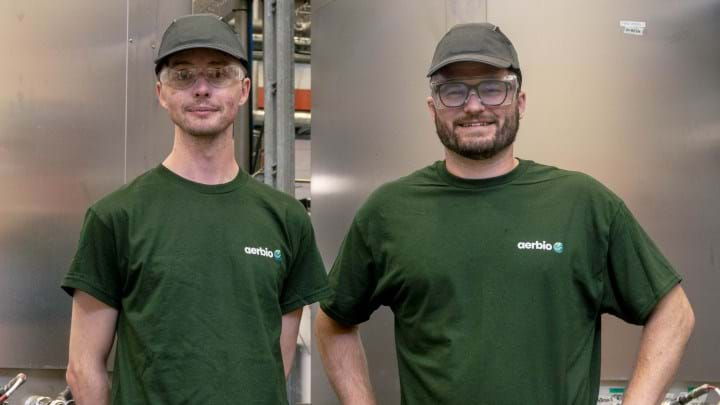Dutch pilot plant turns CO2 into fish and chicken feed

LIVESTOCK and fish could soon be eating protein made from CO2 and hydrogen thanks to the launch of a novel animal feed plant in the Netherlands.
Biotech company Aerbio and members of the consortium REACT-FIRST, including DRAX and Sainsbury’s, have opened a pilot plant at the Brightlands Chemelot industrial park to manufacture Proton, a microbial protein for salmon and chickens.
The facility will initially produce 200 kg per month of Proton, with Aerbio assessing its applications and how best to integrate it into the commercial feed market.
‘Better’ than traditional feed
Traditional feed for chickens and fish are typically made up of soy, corn, grains, and oils. Feed production is a major contributor of CO2 emissions for both the poultry and salmon industries, accounting for 78% and 69% of environmental impacts in those sectors respectively.
For livestock, chickens and pigs most specifically, wheat and barley grown for animal feed accounts for 2m h of land, that is 40% of the UK’s arable land in total.
Proton is developed using a fermentation process that converts food-grade CO2 and H2 into feed. Aerbio says this process does not require arable land, with Proton producing a 90% lower carbon footprint than either fishmeal or soy.
Pete Rowe, the co-founder of Aerbio, said: “Our small-scale trials have proven the fundamentals of Proton – it has a strong nutritional profile and is just as good, if not better, than conventional ingredients.
“Our main input requirements are simply carbon dioxide, water, and power, all of which can be sustainably produced and are readily available.”
Scaling up
Aerbio has just begun engineering work on a larger demonstration facility that will produce 250 t/y of protein. It expects subsequent commercial sites to produce around 100,000 t/y.
Feed trials for chicken and salmon will begin by the end of this summer, with the results from the initial trials being available for the beginning of next year.
Rowe added: “Once we are in the position to fully roll out the technology, we hope to enable better food security for protein, something high on the list of almost every country.”
Recent Editions
Catch up on the latest news, views and jobs from The Chemical Engineer. Below are the four latest issues. View a wider selection of the archive from within the Magazine section of this site.




